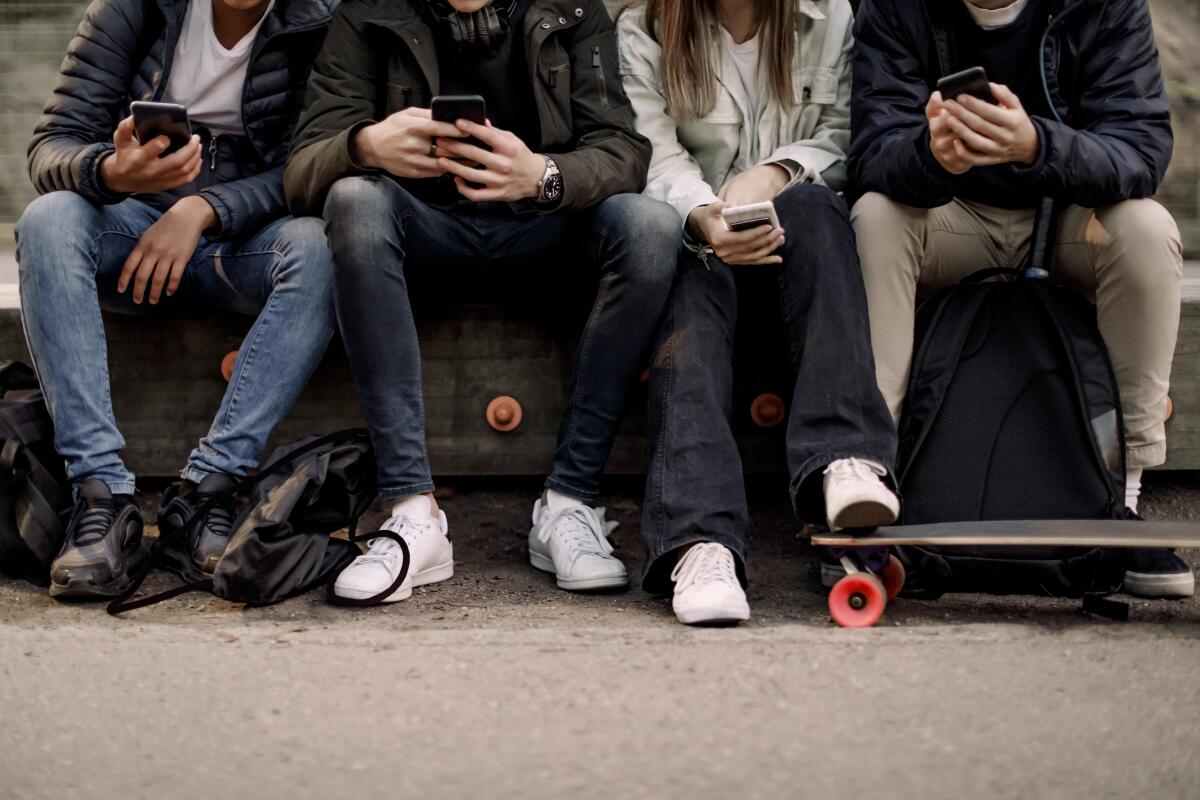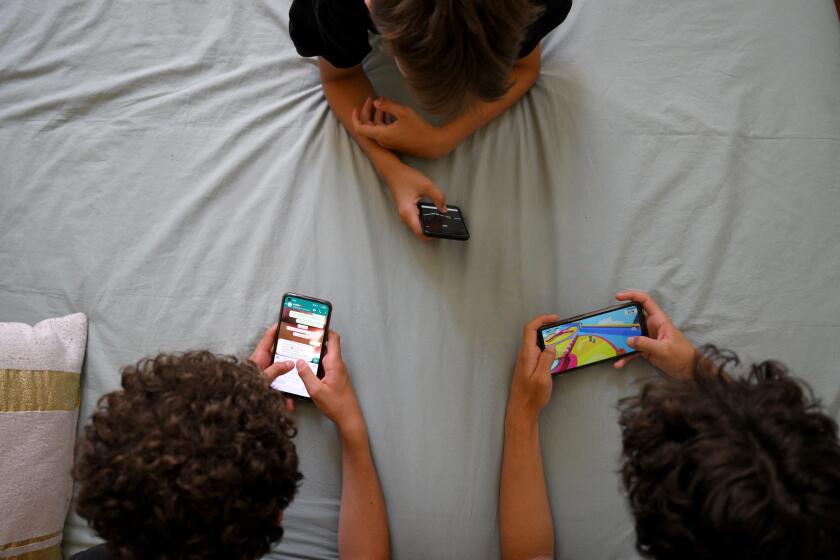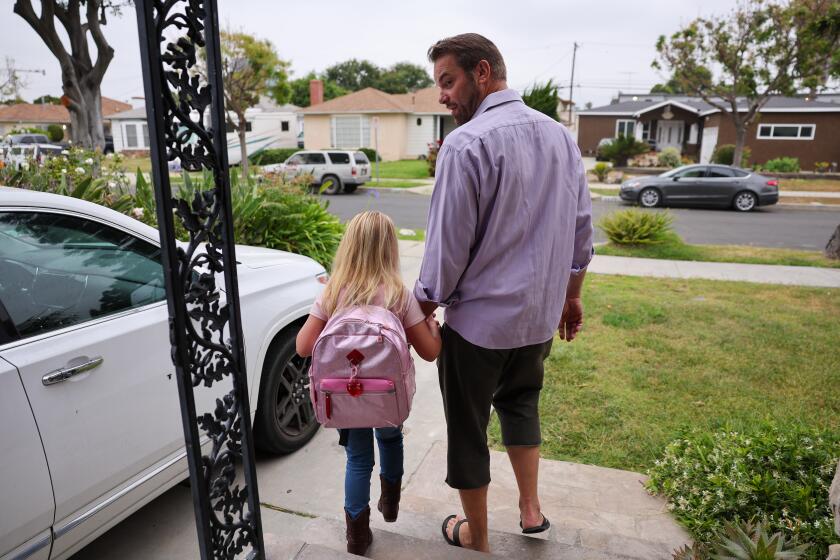Opinion: Why LAUSD should ban smartphones in schools

- Share via
In school after school, the story is the same: Students’ smartphones are distracting them from learning and eroding mental health and in-person social connection. This places an untenable burden on teachers and administrators who police their use according to the policies of their schools. To address this in the Los Angeles Unified School District, I have introduced a resolution to ban student cellphones during the school day. I believe this policy is necessary to create healthier learning environments for our kids.
Research backs up what I’ve observed in my visits to schools. In psychologist Jonathan Haidt’s book, “The Anxious Generation: How the Great Rewiring of Childhood is Creating an Epidemic of Mental Illness,” he shows how the use of smartphones and social media, as well as having access to both in schools, leads to higher rates of depression, anxiety, cyberbullying and physical fights. Additionally, phones and social media drive lower rates of meaningful in-person interaction and less beneficial social-emotional development.
The older children are when they get their first smartphone, the better their mental health later in life. That’s little consolation to teens feeling left out when all their friends are connected.
The academic toll is just as stark. A UNESCO report from 2023 laid out clear indications of the negative effects that mobile phones are having on education globally, citing increased classroom distractions and decreased academic performance.
As studies prove the harm of smartphones and social media, initiatives to curb student phone use in schools are gaining steam across the country — and the world. A handful of states, including Indiana and Florida, and even more schools and districts have implemented bans on smartphones in schools. And California is one of at least a half-dozen states that have legislation pending.
The new regulations appear to be working. Several studies have indicated that curbing phone usage in the classroom increases academic performance, with test score gains akin to gains made when an hour is added to the school week. A study of schools in Spain that imposed smartphone bans showed a jump in test scores and a significant drop in cyberbullying. Researchers have found physical benefits too, as phone limitation during recess leads to more time spent being active.
California fines LAUSD $8.1 million after finding it violated transitional kindergarten requirements over classroom size and staffing amid the grade level’s expansion.
School principals in LAUSD who have implemented phone-free school day policies report that fighting is down, student engagement is up and the overall campus environment is more positive. But current district policy hasn’t been updated since 2011, so they’ve had to take it upon themselves to put stricter rules into effect. If the new policy is approved, principals will simply carry out district guidance.
A smartphone ban in LAUSD schools would come with challenges, particularly related to enforcement. But these are surmountable hurdles. Many schools distribute magnetically sealed cellphone pouches to students. The pouches lock and unlock with a specialized magnet, which are placed near school entrances. Students tap their pouch to lock it when they come to school and then tap it again to unlock it when they leave. Another option is collecting devices in a cellphone locker in the morning; students can retrieve them at the end of the day or in the case of an emergency.
Some schools rely on trust and an honor code — kids can keep their phones but promise not to have them on or out during the day. According to Haidt, however, without actually removing the devices from the equation, teachers and staff end up having to enforce the bans on top of their already full workloads. Even the most vigilant teachers can’t always prevent surreptitious scrolling. And one-on-one enforcement takes more time from teachers and administrators than confiscating phones and then returning them at the start and end of the school day.
A common concern about locking away smartphones is that in an emergency, students won’t be able to call for help. Some public safety experts say that it’s safer for kids not to have their phones in emergency situations. In the case of an active shooter, for example, too many students calling 911 could overload a switchboard, and noises or vibrations from a phone could reveal a student’s location. School officials, not students, need to be executing emergency plans and communicating with teachers, students, parents and law enforcement.
Implementing a smartphone-free policy in LAUSD schools is not an attempt to ignore the realities of the digital age. Students will still have access to the internet with district-provided laptops and tablets. By removing personal smartphones and social media from the school day, we will help keep kids focused on the technology that supports education by insulating them from the distractions of technology that does not.
Just as we ban harmful substances like tobacco and alcohol in schools, we must also implement a districtwide protocol that addresses the adverse effects smartphones and social media have on kids. By going phone-free, LAUSD can help restore learning environments that foster focus, social connectedness and healthy development. Our kids deserve no less.
Nick Melvoin is a member of the Los Angeles Board of Education. @NickMelvoin
More to Read
A cure for the common opinion
Get thought-provoking perspectives with our weekly newsletter.
You may occasionally receive promotional content from the Los Angeles Times.












